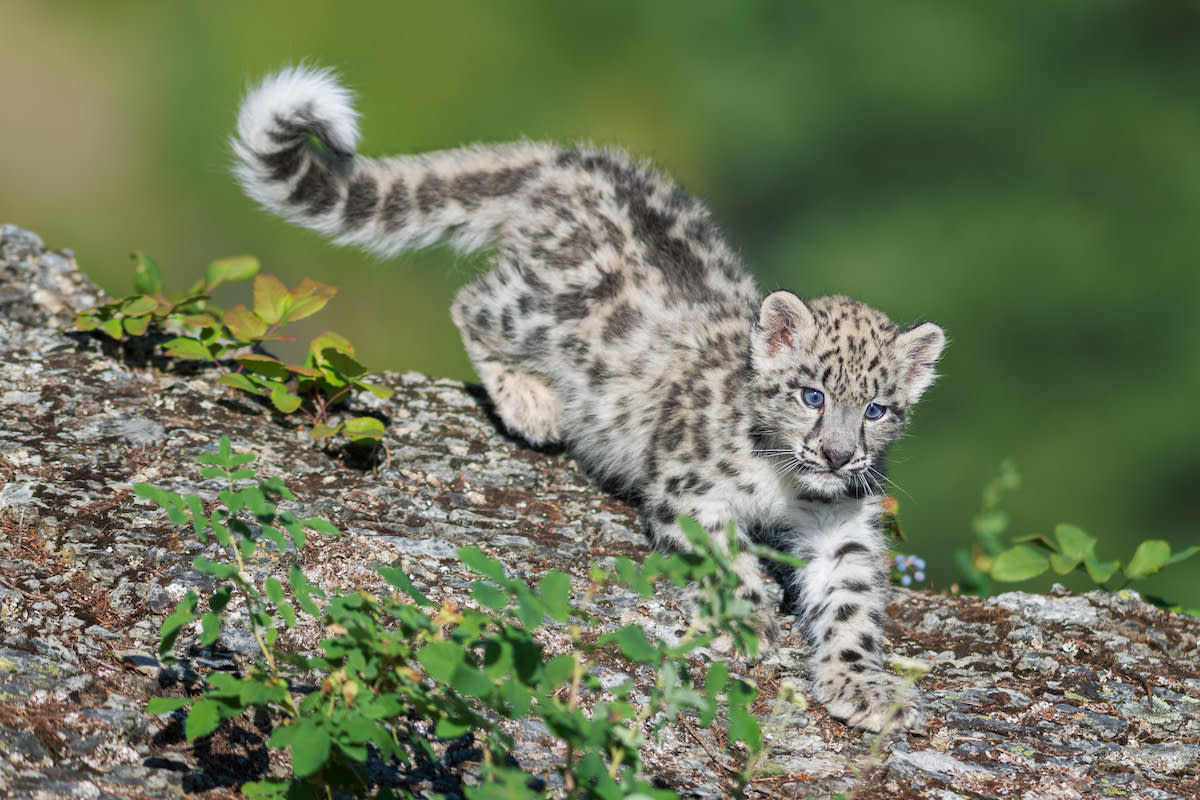Update on Disabled Snow Leopard Cub at Toronto Zoo Couldn't Be Sweeter

In zoos and wildlife centers all over the world, scientists maintain breeding programs of endangered animals, sometimes in the hope of reintroducing them into their native spaces and sometimes just to make sure that these beautiful creatures can act as ambassadors to their counterparts still in the wild. These programs have to be carefully managed so as to manage the potential for genetic problems due to inbreeding, but one benefit is that in captivity, new mothers and babies can be assured of healthy outcomes because vets can manage diseases and defects that might mean a death sentence in the wild.
View the original article to see embedded media.
Such was the case for one of the snow leopard cubs recently born in the Toronto Zoo. Back in may, a three-year-old female snow leopard named Jita gave birth to her first litter of cubs in the Toronto Zoo. Her pregnancy, sired by the zoo’s nine year old male Snow Leopard Pemba, lasted a little over three months, and resulted in two healthy cubs.
Or so it seemed, at first. As the cubs matured, it became evident to their care team that the older of the two female cubs was not able to put weight on her two front legs.
Vet Care for Zoo Babies
The condition, which appears to be one of contracted tendons, is not unknown to veterinary physical therapists. The good news is that it’s a condition that can be overcome with early intervention and therapy as the animal grows, and the treatment is the same for a snow lion cub as it is for a house cat.
“With guidance from an external rehabilitation veterinarian, the team began physiotherapy exercises for her front paws twice a day to improve the flexibility in her paws and joints,” the zoo reports. “Over the course of three visits from the rehabilitation vet, these exercises were expanded as her condition began to improve.”
Over the next few months, they began daily stretching exercises, as well as moving around her food and utilizing toys to try to encourage her to stretch and use her muscles in ways that may initially be difficult.
“Thanks to these dedicated efforts, she has made tremendous progress, and you can see a noticeable difference in her mobility! She always maintained a fighting spirit and her gait never held her back from climbing and moving around. She continues to be active and playful, interacting more confidently with her enrichment and her sister.”
All About Snow Leopards
Snow leopards are so elusive in the wild that they are often known as “ghost cats” in their native China and Central Asia, where they live in cold, dry mountain climates. Their population is vulnerable due to habitat encroachment and poaching for their luxurious fur. Their diet in the wild consists of animals like mountain goats and sheep, and they are shy, solitary creatures. Mama snow leopards raise their cubs for about eighteen months, and their individual hunting grounds can be vast as they search for enough food to freed their growing families.
The Toronto Zoo's new cubs are part of a network of Snow Leopard breeding programs that seeks to better understand these mysterious creatures. The cubs here are not slated to be returned to the wild, but will instead grow to be “species ambassadors” in a zoo.
Looking for more PetHelpful updates? Follow us on YouTube for more entertaining videos.
Or, share your own adorable pet by submitting a video, and sign up for our newsletter for the latest pet updates and tips.


